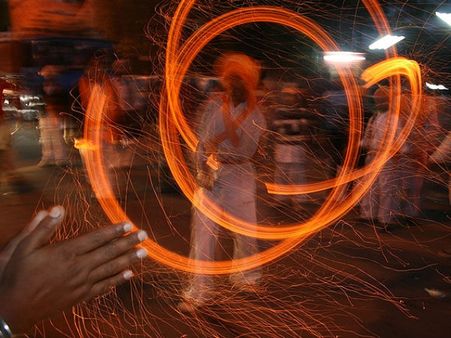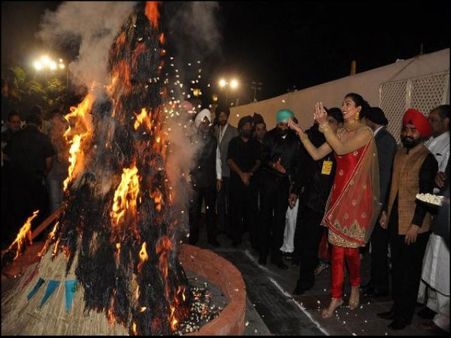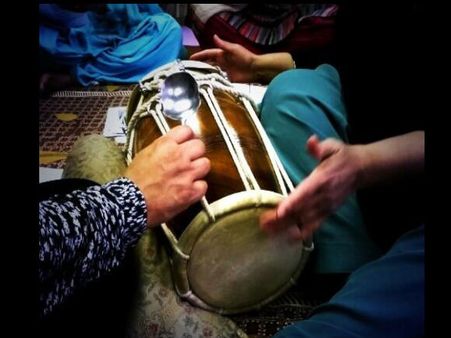Just In
- 57 min ago

- 1 hr ago

- 9 hrs ago

- 18 hrs ago

Don't Miss
- Finance
 Tech Mahindra Q4 Results Preview: Revenue May Fall, But Margins Seen To Expand; To Announce Dividend
Tech Mahindra Q4 Results Preview: Revenue May Fall, But Margins Seen To Expand; To Announce Dividend - Movies
 Aavesham Box Office Collection Day 15 Prediction: Fahadh Faasil's Film To Maintain Steady Run
Aavesham Box Office Collection Day 15 Prediction: Fahadh Faasil's Film To Maintain Steady Run - Sports
 IPL 2024 Centuries List: Full List of Hundreds of All IPL Seasons - All You Need to Know
IPL 2024 Centuries List: Full List of Hundreds of All IPL Seasons - All You Need to Know - Education
 JEE Main Result 2024 Out, Telangana's 15 Toppers Shine, Check Statewise List of 56 Candidates with Perfect 100
JEE Main Result 2024 Out, Telangana's 15 Toppers Shine, Check Statewise List of 56 Candidates with Perfect 100 - News
 Mangalsutra Row: Did Indira Gandhi Donate Gold During The 1962 War? The Facts Behind Priyanka's Claim
Mangalsutra Row: Did Indira Gandhi Donate Gold During The 1962 War? The Facts Behind Priyanka's Claim - Travel
 Escape to Kalimpong, Gangtok, and Darjeeling with IRCTC's Tour Package; Check Itinerary
Escape to Kalimpong, Gangtok, and Darjeeling with IRCTC's Tour Package; Check Itinerary - Technology
 OPPO Find X7 Ultra Camera Deep-Dive: Pushing the Boundaries of Photography on a Smartphone
OPPO Find X7 Ultra Camera Deep-Dive: Pushing the Boundaries of Photography on a Smartphone - Automobiles
 Aston Martin Vantage Launched In India At Rs 3.99 Crore
Aston Martin Vantage Launched In India At Rs 3.99 Crore
Lohri 2020: Reasons Behind Celebration Of This Festival
Indians are known as a bunch of people who celebrate some of the other festivals throughout the year. The year begins with the Lohri and Makar Sankranti celebrations all over the country. Lohri is celebrated with great fervour in the Punjab region.
Lohri is traditionally a bonfire festival. It is a popular winter harvest festival which is celebrated mainly in Punjab. This year the festival will be celebrated on 13 January, but the dates differ sometimes according to the various calendars.
It is amazing to see people celebrating this festival with so much enthusiasm in the freezing cold weather when life in North India comes to a standstill. People light a bonfire, sing folk songs, dance around the bonfire, cook delicious food items and spend the night by staying up. Lohri is more than just a festival, especially for the people of Punjab. Punjabis are a fun-loving, sturdy, robust, energetic, enthusiastic and jovial race, and Lohri is symbolic of their love for celebrations and light-hearted flirtations and exhibition of exuberance.
ALSO READ: 10 SUMPTUOUS PUNJABI RECIPES YOU MAY TRY ON LOHRI
Here are the reasons why Lohri is celebrated with much enthusiasm. Take a look:

Origin
According to the folklores, the day of Lohri is supposed to be the longest night of the year. Therefore people light bonfires to keep off the cold as they stay up all night and spend the longest night of the year, celebrating. However, scientifically the shortest day of the year is around 21-22 December after which the days begin to get longer. Accordingly, winter solstice begins on 21 December or 22 December and Lohri ought to be celebrated on the day of winter solstice which is followed by Makar Sankranti.
Photo Courtesy:Lakshman Anand

Customs
On the morning of Lohri, children go from door to door singing and asking for wood for the bonfire. It is the Indian version of 'trick-or-treat' which is knwon as the 'Lohri loot' in which they demand money or eatables like til, gur, peanuts etc. They sing in praise of Dulha Bhatti, a Punjabi avatar of Robin Hood who robbed the rich to help the poor, and once helped a miserable village girl out of her misery by getting her married off like his own sister.

The Bonfire
The bonfire lit of the night of Lohri is the most imporatnt part of the rituals. After the sun sets, huge bonfires are erected and lit in the front yards of the houses. People gather around the bonfire and circle around it, throwing puffed rice and other munchies into the fire. They shout "Aadar aye dilather jaye" (May honor come and poverty vanish!), and sing popular folk songs. This is a sort of prayer to Agni, the fire god, to bless the land with abundance and prosperity. After the parikrama, people meet friends and relatives, exchange greetings and gifts, and distribute prasad(offerings made to god). Theprasadcomprises five main items:til, gajak,jaggery, peanuts, and popcorn.
Photo Courtesy:Amrit Pal Singh

Songs & Dance
People of Punjab are the most fun loving folks. They perform their famous Bhangra dance and sing folk songs on Lohri. Dancing continues till late night with new groups joining in amid the beat of drums. Traditionally, women do not join Bhangra. They hold a separate bonfire in their courtyard circling it with the gracefulgidda dance.

The Indian Thanksgiving
Lohri can be rightly called as the Indian version of Thanksgiving. It offers a chance to people so that they can take a break from their busy schedules and share each others company. It is a time to be thankful to the Almighty for the all the abundance and properity He has bestowed upon us.
Photo Courtesy: @southasianartuk

Significance Of Lohri
Punjab is the bread basket of India. Wheat is the main winter crop in this region which is sown somewhere around October. In January, these crops become ripe and promise a golden harvest. People celebrate Lohri at this time to thank God before gathering or cutting the crops. The earth, farthest from the sun at this point of time, starts its journey towards the sun, thus ending the coldest month of the year,Paush, and announcing the start of the month of Magh and the auspicious period of Uttarayan.
-
 home n garden8 Home Decor Ideas To Make Your Space Lohri, Makar Sankranti, Pongal Ready And Add Festive Charm
home n garden8 Home Decor Ideas To Make Your Space Lohri, Makar Sankranti, Pongal Ready And Add Festive Charm -
 yoga spiritualityLohri 2024: Wishes, Greetings, Messages, Texts, Images, WhatsApp And Facebook Status
yoga spiritualityLohri 2024: Wishes, Greetings, Messages, Texts, Images, WhatsApp And Facebook Status -
 fashionThis Is How AI Interprets Lohri Fashion And It Is Vibrant, Stylish, Festive And Mind Blowing, Pics Inside!
fashionThis Is How AI Interprets Lohri Fashion And It Is Vibrant, Stylish, Festive And Mind Blowing, Pics Inside! -
 yoga spiritualityLohri 2024 Date And Time: Is Lohri On 13th Jan or 14th Jan? When It Will Be Celebrated In India?
yoga spiritualityLohri 2024 Date And Time: Is Lohri On 13th Jan or 14th Jan? When It Will Be Celebrated In India? -
 festivalsLohri, Pongal, And Makar Sankranti 2023: Significance And Festive Foods
festivalsLohri, Pongal, And Makar Sankranti 2023: Significance And Festive Foods -
 festivalsHappy Lohri 2023: Wishes, Images, Quotes, Messages, Greetings, WhatsApp And Facebook Status
festivalsHappy Lohri 2023: Wishes, Images, Quotes, Messages, Greetings, WhatsApp And Facebook Status -
 bollywood wardrobeLohri 2021: Divyanka Tripathi Dahiya Extends Wishes To Fans By Treating Them With Her Pretty Ethnic Looks
bollywood wardrobeLohri 2021: Divyanka Tripathi Dahiya Extends Wishes To Fans By Treating Them With Her Pretty Ethnic Looks -
 festivalsLohri 2021: Date, Significance And Puja Vidhi Of This Festival
festivalsLohri 2021: Date, Significance And Puja Vidhi Of This Festival -
 bollywood wardrobeDeepika Padukone’s Shimnering Sabyasachi Yellow Suit Is Perfect For Lohri Celebration
bollywood wardrobeDeepika Padukone’s Shimnering Sabyasachi Yellow Suit Is Perfect For Lohri Celebration -
 festivalsLohri 2022: Know About The Date, History And Significance Of This Festival
festivalsLohri 2022: Know About The Date, History And Significance Of This Festival -
 festivalsLohri 2020: Significance Of Celebrating This Beautiful Festival Of Worshiping Fire
festivalsLohri 2020: Significance Of Celebrating This Beautiful Festival Of Worshiping Fire -
 yoga spiritualityMakar Sankranti 2024: 10 Mantras To Chant To Get The Blessings Of Sun God
yoga spiritualityMakar Sankranti 2024: 10 Mantras To Chant To Get The Blessings Of Sun God


 Click it and Unblock the Notifications
Click it and Unblock the Notifications



